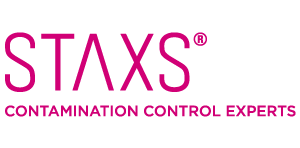Sustainability in the cleanroom: turning compliance into real action
The cleanroom industry is entering a new era, where sustainability is no longer optional, but expected. With evolving EU regulations such as the Green Deal, ESPR, CSRD, EUDR, and PPWR, manufacturers are under increasing pressure to align operations with environmental goals.
But how can companies achieve meaningful progress while maintaining the high standards of cleanroom contamination control?
The cleanroom sustainability dilemma
Cleanrooms are resource-intensive by nature. From strict hygiene protocols to single-use consumables, contamination control often comes at an environmental cost. Regulations are now pushing the industry to rethink materials, processes, and reporting practices. And while these guidelines and regulations aim to help, the path to compliance can feel overwhelming, especially when product safety is non-negotiable.
Science-backed, practical solutions
In our latest article, Stefaan Vanhalle, R&D Manager at STAXS®, outlines how cleanroom stakeholders can navigate this shift. Instead of viewing sustainability as a burden, he offers a perspective that combines scientific validation, material innovation, and smart product design to turn compliance into opportunity.
- Replacing assumptions with data
- Prioritising high-impact improvements
- Designing for both sustainability and safety
“The focus should be on collective action and real-world improvements, rather than solely on regulatory compliance,” Stefaan explains.
A sustainable future starts now
Our role as a cleanroom solutions provider means more than meeting current standards! We want to help set new ones. With this study, we aim to empower our partners and customers to make informed, confident decisions that move their sustainability goals forward, without compromising what matters most: contamination control and product integrity.

